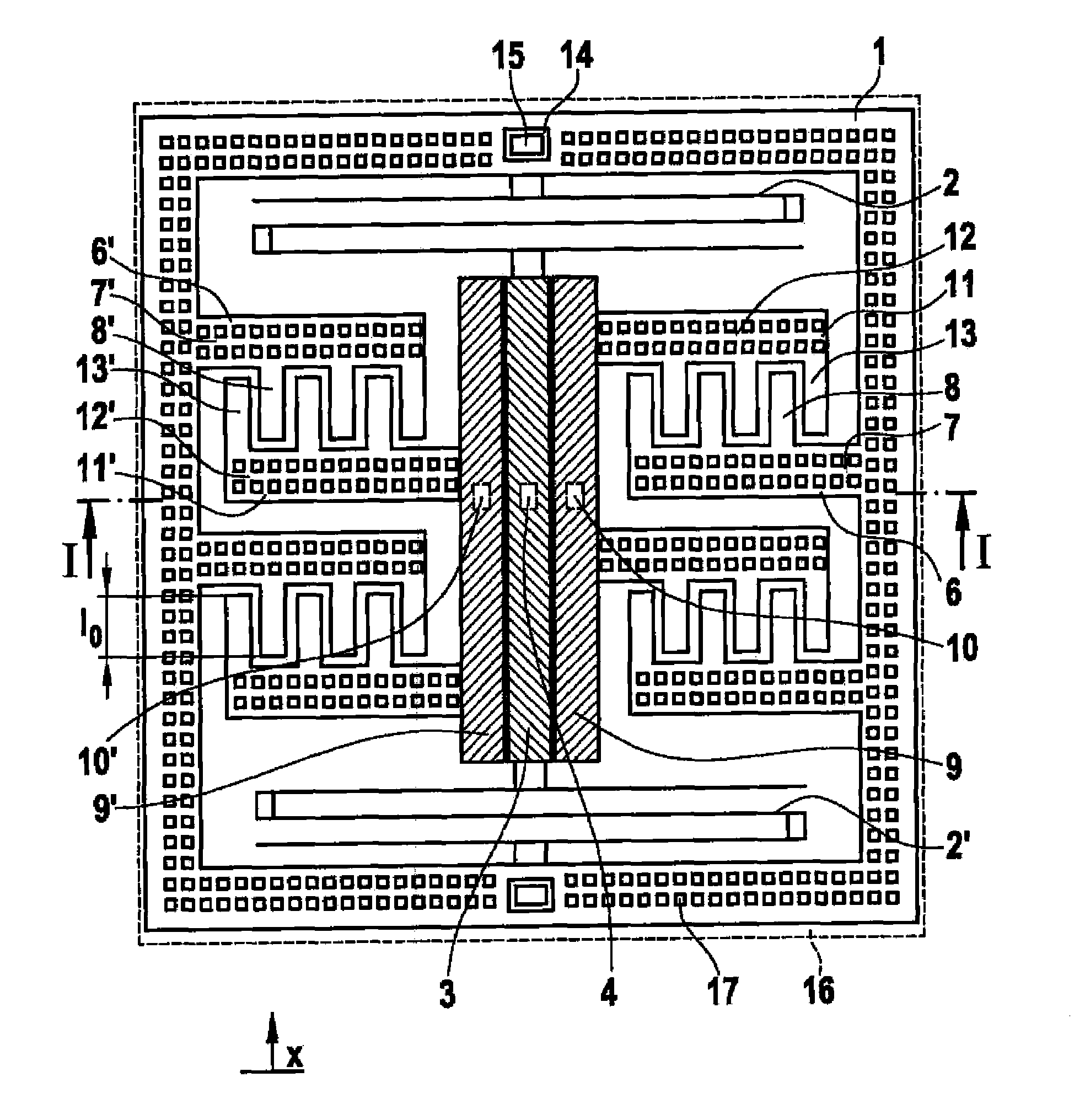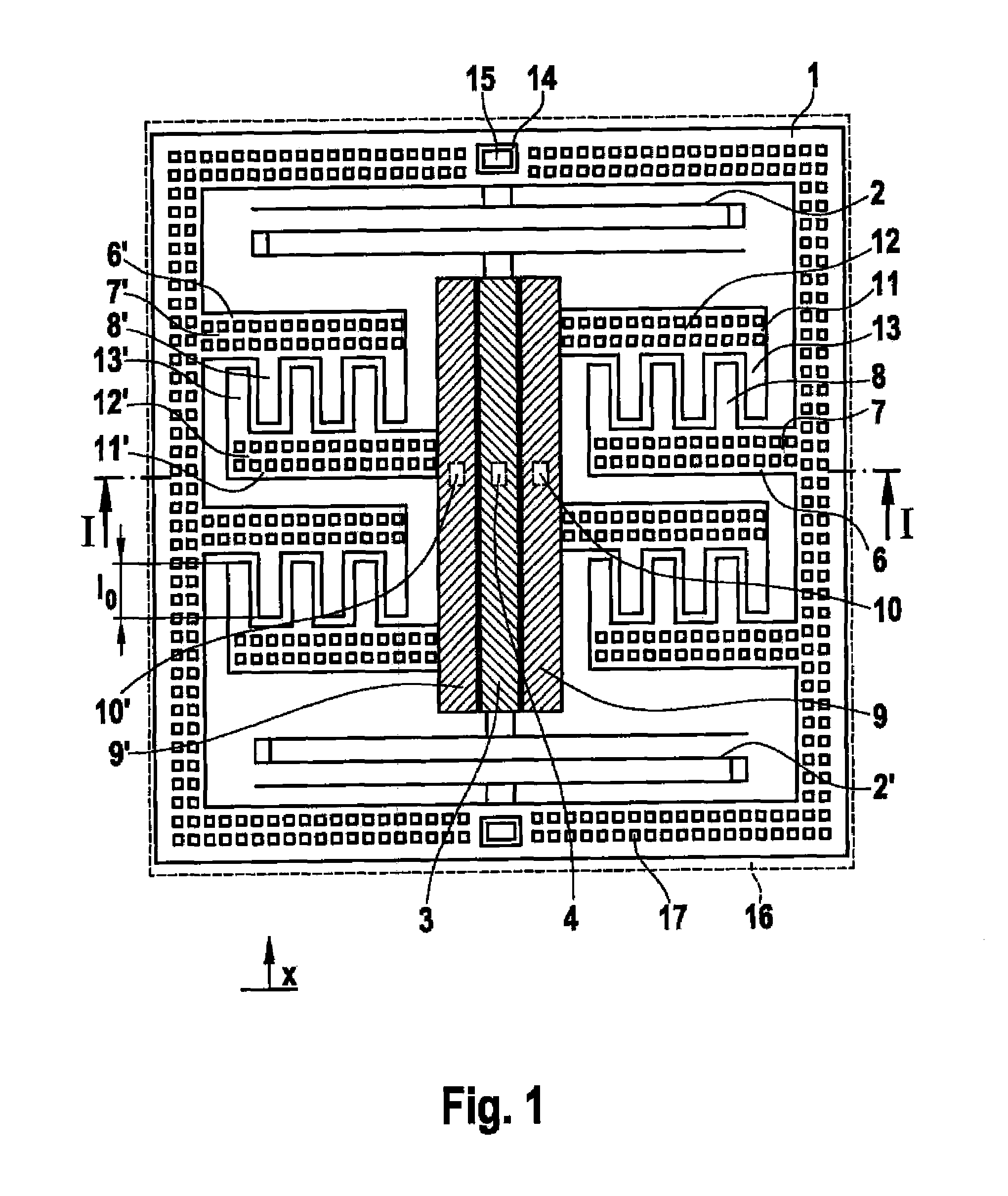Acceleration sensor with comb-shaped electrodes
a technology of acceleration sensor and comb-shaped electrode, which is applied in the direction of speed/acceleration/shock measurement, measurement devices, instruments, etc., can solve the problems of large space requirement, disadvantageously reduced rigidity of system, inability to overcome significant or intolerable offset signals, etc., to achieve low sensitivity to substrate bending, large capacitance values, and high sensitivity of acceleration sensors
- Summary
- Abstract
- Description
- Claims
- Application Information
AI Technical Summary
Benefits of technology
Problems solved by technology
Method used
Image
Examples
Embodiment Construction
[0018]FIG. 1 shows a representation of a sensor system according to the present invention for detecting accelerations in the low-g range in a direction parallel to the wafer plane, in a top view of the plane of the seismic mass. Seismic mass 1 is fashioned as a rectangular frame that is connected, via a pair of S-shaped flexible springs 2, 2′, to a connecting beam 3, which in turn has a central fastening area 4 in which the connecting beam is structurally connected to a substrate 5. S-shaped flexible springs 2, 2′ are situated in mirror-symmetrical fashion, thus defining the direction of deflection of seismic mass 1 in the x direction, because S-shaped flexible springs 2, 2′ mutually prevent deformations of each other in the case of transverse accelerations. In this way, a low cross-sensitivity results without having to increase the spring rigidity in the x direction. This is a precondition of the suitability of the sensor according to the present invention for use in measuring smal...
PUM
 Login to View More
Login to View More Abstract
Description
Claims
Application Information
 Login to View More
Login to View More - R&D
- Intellectual Property
- Life Sciences
- Materials
- Tech Scout
- Unparalleled Data Quality
- Higher Quality Content
- 60% Fewer Hallucinations
Browse by: Latest US Patents, China's latest patents, Technical Efficacy Thesaurus, Application Domain, Technology Topic, Popular Technical Reports.
© 2025 PatSnap. All rights reserved.Legal|Privacy policy|Modern Slavery Act Transparency Statement|Sitemap|About US| Contact US: help@patsnap.com



